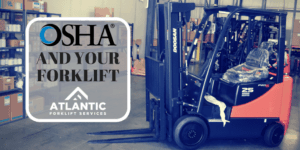Your forklift operators have been trained on the appropriate trucks and know those units back to front, but did you know that if you add any attachments or alter the forklift in any way operators must be trained again?
OSHA has a list of requirements for attachments and any item that alters the truck’s center of gravity, visibility or capacity.
Some of the attachments commonly found in a warehouse might include slip sheet attachments that fit over the forks and allow shipping and receiving of materials without pallets; sideshifters that allow the forks to be adjusted to the right or left- either manually or mechanically; carton and barrel clamps; paper roll or carpet handlers- usually a long shaft that extends out from the forklift; bale clamps; rotators for grabbing and rotating the load; telescoping forks; and personnel platforms made for lifting and carrying people.
If you are implementing any of these accessories, OSHA requires operators be trained in the attachment, operation and limitations of each.
If a new attachment is added to a forklift, the operator must be retrained according to the operator’s manual of both the forklift and the accessory.
OSHA regulations require that the operator not exceed the rated capacity of the lifts and the accessories, and that he/she know the mechanical limitations of the forklift.
Signage and labeling on the forklift must be updated with new instruction plates, tags and decals when a forklift is equipped with a new attachment.
OSHA requires that operators treat an unloaded forklift with an attachment as though it were “partially” loaded.
Attachments must also be included in the daily and regular preventative maintenance schedules, and inspections must be tailored to the specific attachments.
OSHA requirements are nothing to play with. If you have any questions, you can always contact our experts and technicians and they can guide you through the maze of OSHA rules and regs.

